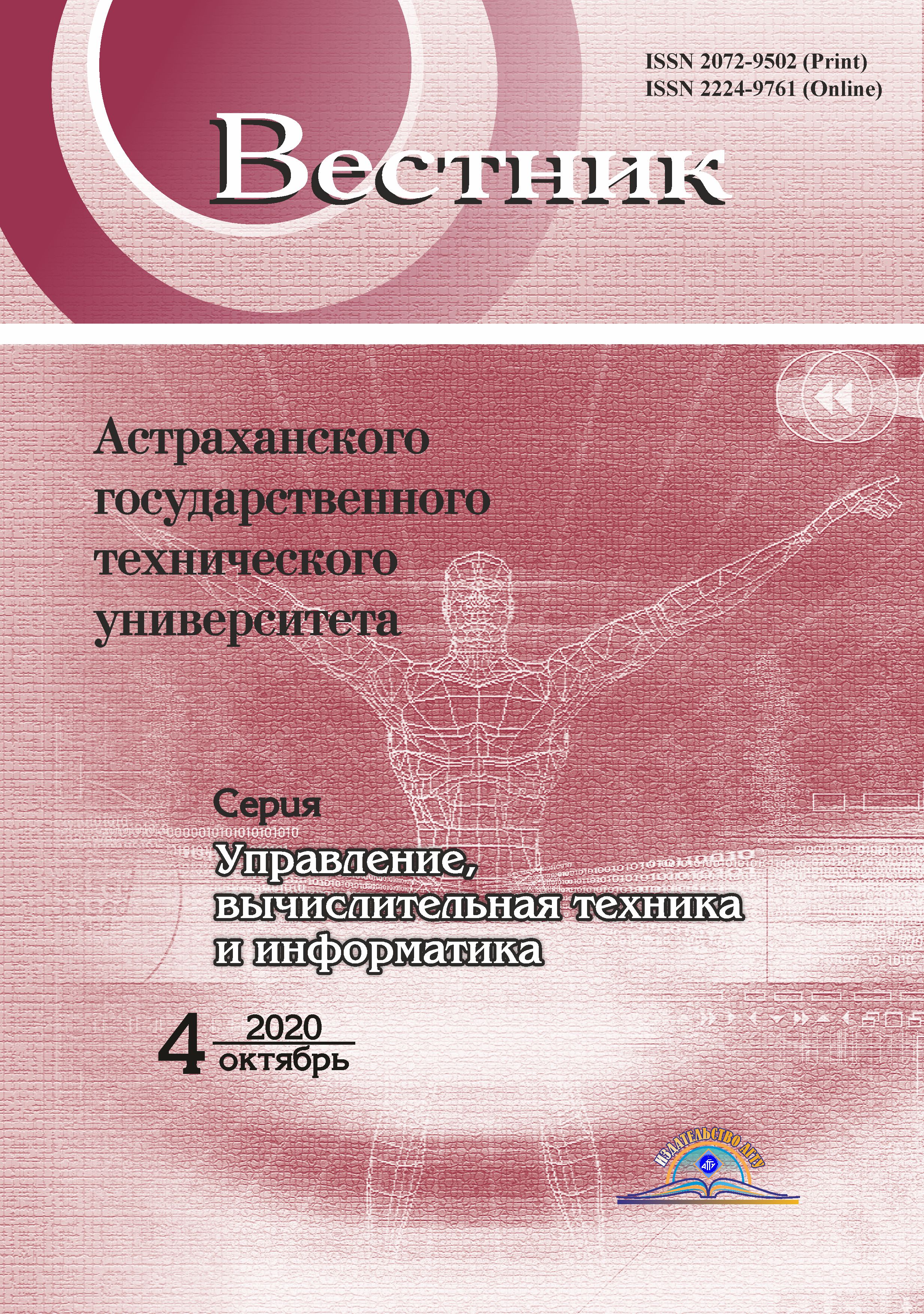Russian Federation
The article considers using direct distribution neural networks and fuzzy neural networks for assessing the operational state of data transmission system elements. In order to select the type of artificial neural network that most fully meets the task of redefining data for predicting the operational state of communication network elements, factors presented in quantitative form are taken into account. For that purpose, the amount of data transmitted through active equipment was selected as the most significant factor having a high level of uncertainty in networks with packet data transmission. The predicted values and changes in traffic levels resulting from the operation of a neural network allow to make the predictive analysis of the operability of the communication networks equipment. Automation of the process and analysis of the equipment operability imply commissioning this function to the assessment system for typical elements of data networks with similar operational conditions. This helps to reduce the number of poor-quality decisions on modernization and increase the speed of response to emergency situations.
direct distribution neural network, fuzzy neural network, forecasting, data transmission system, number of layers, bandwidth, data rate, sigmoid function
1. Vishnevskii V. M. Teoreticheskie osnovy proektirovaniia komp'iuternykh setei [Theoretical foundations of computer network design]. Moscow, Tekhnosfera Publ., 2003. 512 p.
2. Raili D., Kriner M. NGOSS. Postroenie effektivnykh sistem podderzhki i ekspluatatsii setei dlia operatora sviazi [NGOSS. Building effective systems for support and operation of networks for telecom operator]. Moscow, Al'pina Biznes Buks Publ., 2007. 192 p.
3. Zhukov V. G., Bukhtoiarov V. V. O primenenii iskusstvennykh neironnykh setei s radial'nymi bazisnymi funktsiiami v zadachakh obnaruzheniia anomalii v setevom trafike [Using artificial neural networks with radial basis functions in problems of detecting anomalies in network traffic]. Reshetnevskie chteniia, 2013, vol. 2, pp. 285-286.
4. Chan K. T., Sorokin A. A. Nechetkaia sistema upravleniia intensivnost'iu peredachi trafika v setiakh peredachi dannykh [Fuzzy control system of traffic intensity in data transmission networks]. Izvestiia Volgogradskogo gosudarstvennogo tekhnicheskogo universiteta, 2018, no. 5 (215), pp. 94-101.
5. Kviatkovskaia A. E., Kviatkovskaia I. Iu. Agentnyi podkhod dlia razrabotki sistemy podderzhki priniatiia reshenii po otsenke stoimosti biznesa, osnovannoi na rassuzhdeniiakh po pretsedentam [Agent-based approach for developing decision support system for assessing business value based on reasoning precedents]. Nauka i praktika: materialy Vserossiiskoi mezhdistsiplinarnoi nauchnoi konferentsii (Astrakhan', 16-20 oktiabria 2017 g.). Astrakhan', 2017. Pp. 88-89.
6. Kiseleva O. I., Shubat O. M. Prognozirovanie vyruchki predpriiatiia: metodicheskie podkhody i printsipy [Forecasting company's revenue: methodological approaches and principles]. Rossiiskie regiony v fokuse peremen: materialy Mezhdunarodnoi konferentsii. Ekaterinburg, 2017. Pp. 597-604.
7. Khaikin S. Neironnye seti: polnyi kurs [Neural networks: complete course]. Moscow, Izdat. dom Vil'iams, 2008. 1103 p.
8. Morozova L. A., Khaikov K. V. Metody resheniia upravlencheskikh zadach v otrasli telekommunikatsii [Methods for solving management problems in telecommunications industry]. Nauchnye trudy SWORLD. Ivanovo, OOO «Nauchnyi mir», 2015. Vol. 16, no. 2 (39). Pp. 22-27.
9. Oleinikov A. A., Sorokin A. A. Metodika podderzhki priniatiia resheniia v protsesse modernizatsii elementov sistem peredachi dannykh [Decision support methodology in modernizing elements of data transmission systems]. Vestnik Tambovskogo gosudarstvennogo tekhnicheskogo universiteta, 2018, vol. 24, no. 3, pp. 446-454.
10. Paklin N. B., Oreshkov V. I. Biznes-analitika ot dannykh k znaniiam [Business analytics from data to knowledge]. Saint-Petersburg, Tekhnologii analiza dannykh Publ., 2013. 704 p.
11. Protalinskii O. M., Azhmukhamedov I. M. Modelirovanie plokho formalizuemykh protsessov v sotsiotekhnicheskikh sistemakh [Modeling poorly formalizable processes in socio-technical systems]. Prikladnaia informatika, 2013, no. 4 (46), pp. 106-113.
12. Barabanova E., Maltseva N., Kvyatkovskaya I., Beresnev I. Somputer-Aided Design Software for Buffer Management in Routers. First Conference, CIT&DS 2015 (Volgograd, Russia, September 15-17, 2015). Springer International Publishing, 2015. Pp. 160-169.
13. Barabanova E. A., Vytovtov K. A., Maltseva N. S., Kravchenko O. V., Kravchenko V. F. Models and algorithms of optical switching systems with decentralized control. 2019 IEEE Conference of Russian Young Researchers in Electrical and Electronic Engineering (2019 ElConRus) (Saint-Petersburg, January 28-31, 2019). Saint-Petersburg, 2019. Pp. 64-68.
14. Oleynikov A. A., Pishin O. N., Sorokin A. A. Block diagrams of means of gathering information about the state of the subsystem access network of a cellular operator. 2018 International Conference on Actual Problems of Electron Devices Engineering APEDE - 2018 (Saratov, Russia 27-28 Sept. 2018). Pp. 199-205.
15. Sorokin A. A., Oleynikov A. A., Goryunov A. A. Using fuzzy classification to support decisionmaking during the modernization of the network infrastructure elements. 1st Moscow Workshop On Electronic And Networking Technologies, MWENT-2018 (Moscow, 14-16 marta 2018 g.). Moscow, Institute of Electrical and Electronics Engineers Inc., 2018. Pp. 1-5.
16. Borisov V. V., Kruglov V. V., Fedulov A. S. B82 Nechetkie modeli i seti [Fuzzy models and networks]. Moscow, Goriachaia liniia-Telekom Publ., 2012. 284 p.
17. Gol'dshtein B. S., Kucheriavyi A. E. Seti sviazi post_NGN [Post-NGN communication networks]. Saint-Petersburg, BKhV-Peterburg Publ., 2014. 160 p.
18. Dmitriev V. N., Sorokin A. A., Akhmat Iu., Alavadi G. A. Kh. Algoritm vybora mesta raspolozheniia uzlov infokommunikatsionnoi seti, osnovannyi na primenenii obobshchennogo pokazatelia kachestva [Algorithm for choosing location for nodes of theinfocommunication network based on using generalized quality indicator]. Vestnik Astrakhanskogo gosudarstvennogo tekhnicheskogo universiteta. Seriia: Upravlenie, vychislitel'naia tekhnika i informatika, 2015, no. 2, pp. 71-78.
19. Leonenkov A. V. Nechetkoe modelirovanie v srede MATLAB i fuzzy TECH [Fuzzy modeling in MATLAB and fuzzy TECH environment]. Saint-Petersburg, BKhV-Peterburg Publ., 2005. 736 p.
20. Liuger Dzh. Iskusstvennyi intellekt: strategii i metody resheniia slozhnykh problem [Artificial intelligence: strategies and methods for solving complex problems]. Moscow, Vil'iams Publ., 2018. 864 p.
21. Gitman M. B., Stolbov V. Iu., Giliazov R. L. Upravlenie sotsial'no-tekhnicheskimi sistemami s uchetom nechetkikh predpochtenii [Management of social and technical systems subject to fuzzy preferences]. Moscow, Lenand Publ., 2011. 272 p.















